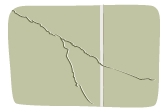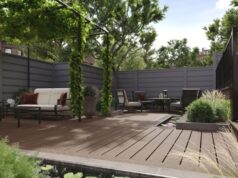
Cracks in concrete and settling ground can do a lot of damage to your home. Find out how to deal with and prevent this kind of damage.

What causes water seepage?
Water seepage involves the movement of water from up beneath the foundation of a house. Heavy rain, rising water table levels and burst pipes can all cause excessive water to travel through the soil beneath your house, changing its volume and consistency. This can disrupt the stability of the slab your home rests on, causing it to buckle and bend. This effect is especially noticeable during sudden weather fluctuations, like a long dry spell broken by heavy rain. It can also be brought about by high and low temperature fluctuations, as the water will evaporate or freeze, changing the volume of the soil.
What causes settling?
Settling is what happens when the soil shifts and shrinks beneath a house, disrupting the stability of the foundation and often causing damage to the slab. In the case of stumps, settling may cause damage to plaster and brickwork, doorways and windows or even to the frame of the house.
Settling can happen for a number of reasons, depending on the soil type beneath the house. In some cases the site hasn’t been compacted properly, causing the ground to further move under the weight of the house. Homes built on fill land may find pockets of organic material that decompose and leave a void, which causes the soil to drop; undetected air pockets can also cause this. Highly reactive clay sites can expand and contract unpredictably, sometimes gaining or losing close to 20 times their volume, depending on how much available moisture there is. This can easily cause cracks and humps in the foundation.
How to deal with seepage and settling
There is little that can be done to completely prevent these things from happening, but should they occur there are methods to restabilise your subfloor.
If you have a slab subfloor, one method is underpinning. This can be likened to adding underground stilts beneath the slab to prop it up when the soil has given way beneath it. Another method is to inject a grout slurry into void spaces in the soil, filling them up to prevent or minimise the risk of collapse. Any cracks in the concrete foundation can be filled, as long as they are not continuing to expand.
If your stumps have settled, you will need to either adjust them (if you have adjustable stumps), or consider restumping your home.
However you choose to deal with it, the state of your subfloor should be carefully monitored to make sure your house doesn’t suffer any structural damage. It is not a problem that goes away easily, so if your house is built on reactive soil you will need to be vigilant about checking for signs of settling and seepage.





